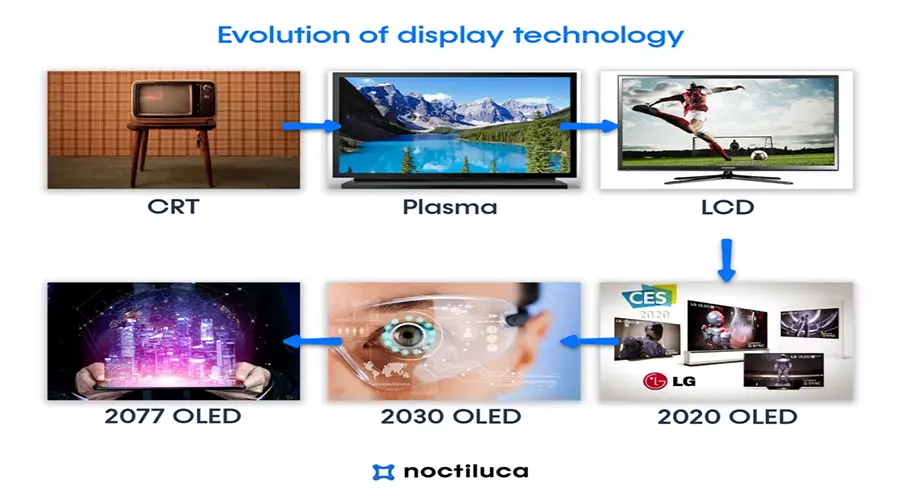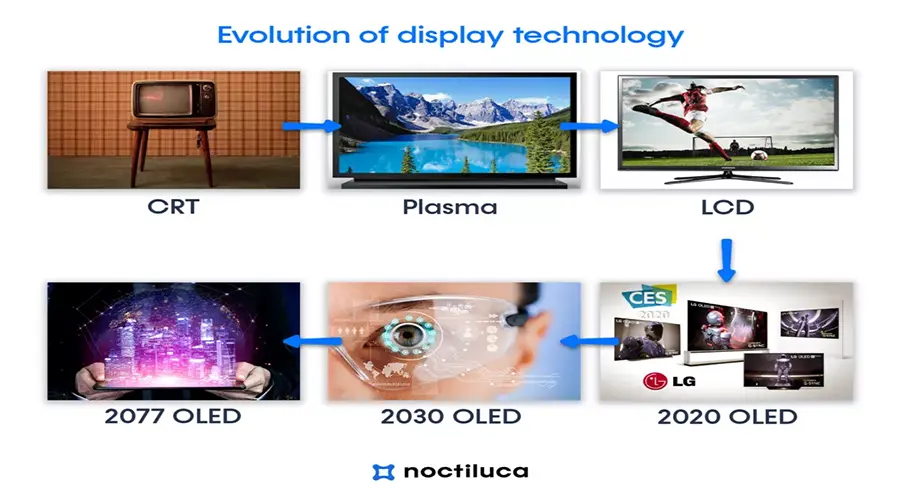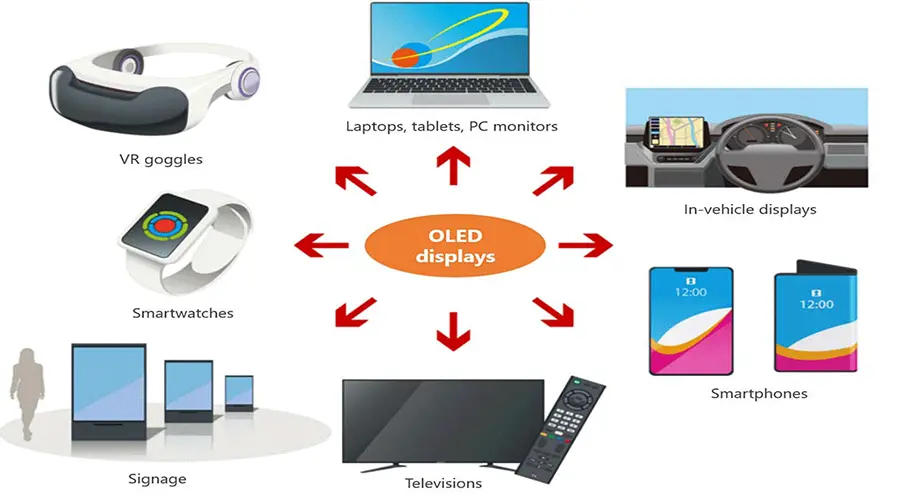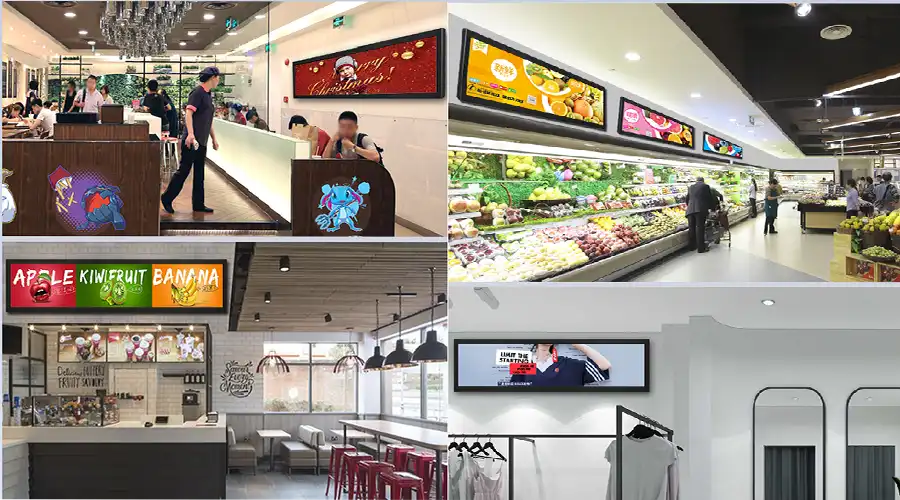
OLED Displays (Organic Light Emitting Diode) are self-emissive screens where each pixel lights independently. This enables ultra-thin modules, premium image quality, low-power dark UI performance, and flexible designs — making OLED ideal for next-gen industrial, wearable, automotive and retail devices.
TL;DR — Quick Engineering Summary
- Self-emitting pixels → no backlight → True black + extreme contrast
- Ultra-thin form factors → flexible, curved and transparent designs
- Fast response + wide viewing angles → ideal for motion UI and video
- Outdoor visibility depends on brightness + AR films
- Static UI may cause burn-in → needs UI/firmware prevention strategy
1️⃣ What is an OLED Display? (Principles & Types)
How OLED emits light
Each pixel contains organic semiconductor material. When voltage is applied, it emits light directly — resulting in true black and high contrast.
Main Types
- AMOLED — TFT active matrix, suited for high-res & larger displays
- PMOLED — simple passive matrix, for small icons & wearables

Form Factors
- Flexible & Curved OLED
- Foldable OLED
- Transparent OLED
2️⃣ Key Advantages & Engineering Considerations
Advantages
- True black + Millions:1 contrast (per-pixel OFF state)
- Ultra-light + ultra-thin (no backlight stack)
- Faster than LCD → ideal for animations & real-time UI
- Wide viewing angle, high color saturation (DCI-P3 95–100%)
Limitations
- Lower peak brightness vs MiniLED in direct sunlight
- Burn-in risk on static UI → needs compensation algorithms
- Higher cost on large / special shapes (transparent, curved)

3️⃣ OLED Display Applications
- Industrial HMI — better UI readability in compact devices
- Automotive — curved dashboards, wide-temp stability
- Wearables — low power dark UI, comfortable form factors
- Medical & Instruments — high contrast data visualization
- Smart Retail & Transparent Signage
| Industry | OLED Benefit | Key Requirement |
|---|---|---|
| Industrial HMI | Readability, Thin Design | -20~70°C, Impact-resistant cover |
| Automotive | Curved cockpit display | Wide-temp -40~85°C |
| Wearables | Ultra-low power | Small size, SPI/I2C |
4️⃣ OLED vs LCD / MiniLED / MicroLED

| Feature | OLED | MiniLED LCD | MicroLED |
|---|---|---|---|
| Black / Contrast | ★★★★★ | ★★★★☆ | ★★★★★ |
| Thickness | Ultra-thin | Thicker | Thin |
| Peak Brightness | Medium | High | Very High |
| Static UI Risk | Possible burn-in | No | No |
5️⃣ Key Specs & B2B Selection Guide
Must-check Engineering Specs
- Size & Resolution
- Brightness & Polarizer / AR coating
- Refresh & Response time
- Interface: MIPI / eDP / LVDS / SPI
- Power consumption (UI related)
- Operating temp — Industrial vs Automotive grade
- Touch integration: On-Cell / OGS
✅ Conclusion
OLED Display is one of the strongest display solutions for products requiring premium UX, real-time motion, thin design, and energy efficiency. For outdoor high-brightness or ultra-long lifetime products, hybrid solutions may be evaluated.
Send us your requirements — size, brightness, interface, and environmental demands — and we will provide: Datasheet + Samples + Mass-production plan.
📩 Contact BROWNOPTO for OLED Solutions →
FAQ: Common B2B Questions





댓글 남기기
이 사이트는 hCaptcha에 의해 보호되며, hCaptcha의 개인 정보 보호 정책 과 서비스 약관 이 적용됩니다.